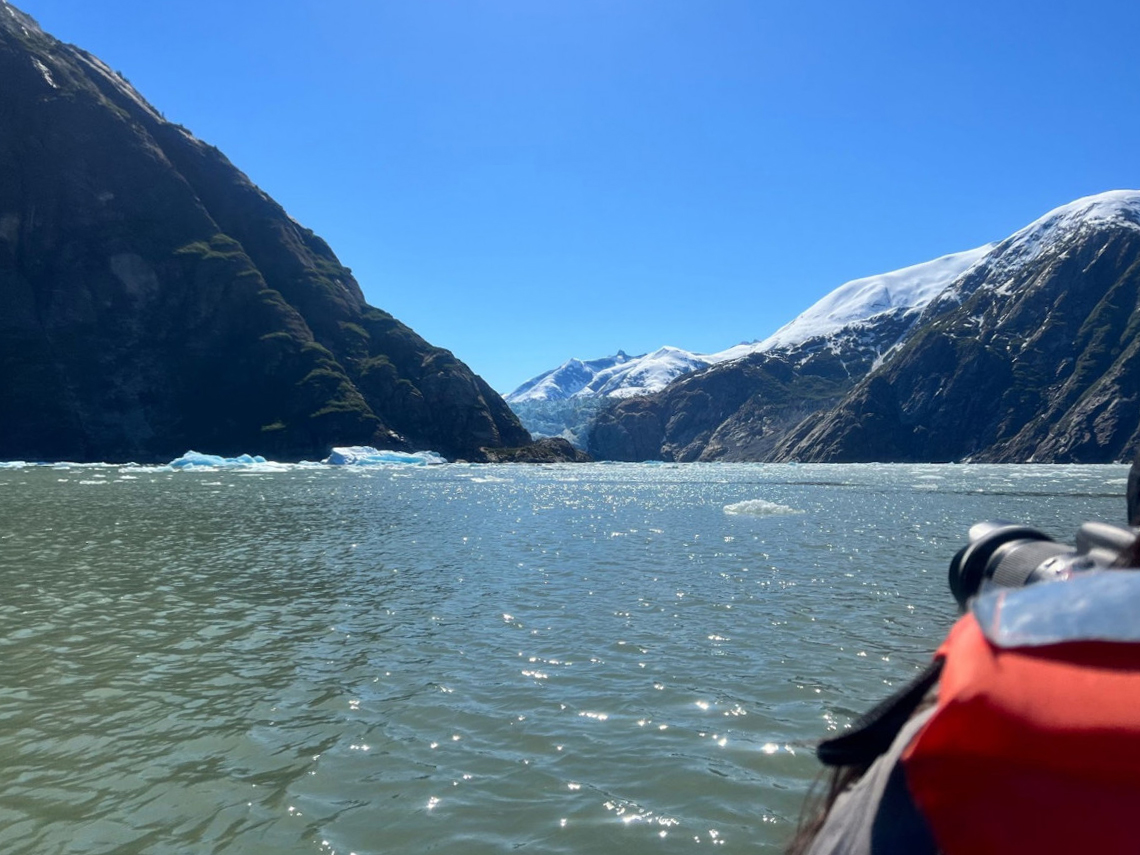
Ancient glaciers carved this canyon in Tracy Arm Fjord thousands of years ago. Our group sailed via Zodiac to the glacier’s face. (Halley Hughes/University of Arizona)

Ancient glaciers carved this canyon in Tracy Arm Fjord thousands of years ago. Our group sailed via Zodiac to the glacier’s face. (Halley Hughes/University of Arizona)
I sat on the edge of the Zodiac as we zoomed down the fjord. Chunks of ice floated around us, ranging in size from cubes that could fit in a glass to icebergs as big as my apartment. I pulled my warmest clothes closer to my body as the cold glacial winds made me shiver. The Tracy Arm Fjord, south of Juneau, Alaska, is a cathedral of stone and ice. Giant rock faces stretch thousands of feet into the sky as icebergs reach deep below the water and into the murky depths.
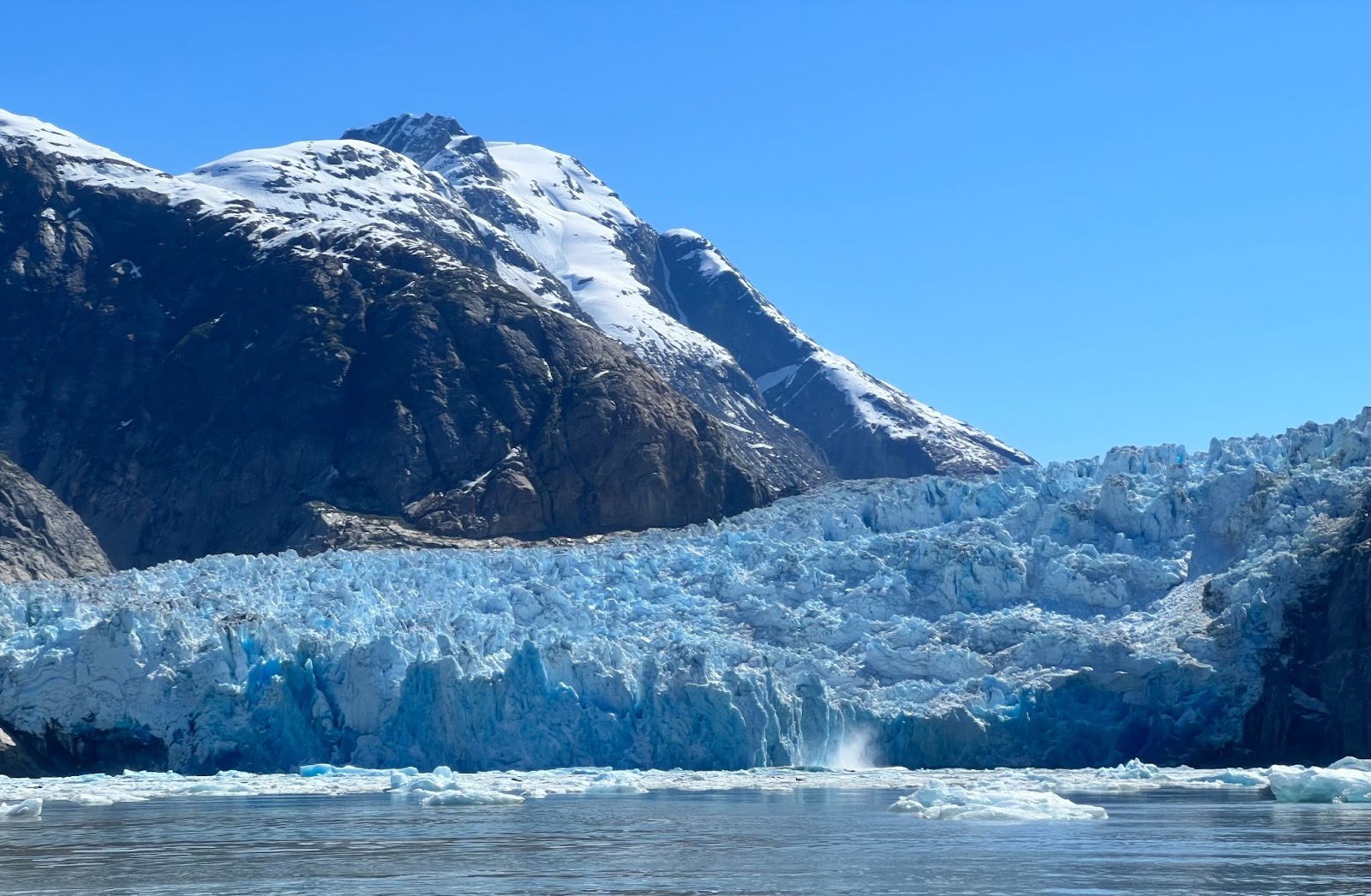
We were three-quarters of a mile away and yet the glacier stood as a towering monument that was almost too large to comprehend. Our boat’s collective silent awe broke when a sudden thunderous pounding traveled down the canyon like a booming heartbeat “ba-dum, ba-dum, ba-dum.”
“Did you all hear that?” naturalist Tim Martin asked excitedly. A large chunk of ice breaking off the face of a glacier caused the sound — in an event called a “calving.” In addition to being a naturalist for Lindblad Expeditions, Martin teaches geology, astronomy, art, and earth science at Elon University. He has 20 years of experience in his field and I was grateful he was our guide on the Zodiac that afternoon in Tracy Arm. Being with him in that hallowed place of geology was an inspiring experience.
My time in Alaska taught me that rocks are our eldest knowledge holders. Understanding ice, glaciers, mountains, and rocks is like understanding the language of the Earth. After this trip, I believe that when we understand and connect personally with the Earth, we are more deeply inspired to protect it.
“Geologically, Southeast Alaska is a confusing place,” Martin said. “Southeast Alaska’s mountains are like a conveyor belt at the grocery store that doesn’t have a cashier or bagger. All the material moves and then piles up at the end, tumbling and rolling over each other.” The tectonic activity (the large plates of land and ocean that make up the Earth’s surface) in Southeast Alaska is strange and unique. It has produced some of the most beautiful and complex landscapes in the United States. Southeast Alaska has all three standard types of rock, sometimes several occurring in the same rock face. However, Alaska has an iconic fourth kind of rock.
“You know,” Martin said, as he threw his whole upper body over the bow of the Zodiac. “ICE is a rock too!” Martin popped back into our Zodiac holding a 30-pound chunk of crystal-clear ice that had been floating in the fjord. He passed the hefty ice cube to me, and as it melted on my lap I listened to him tell us about the power of ice.
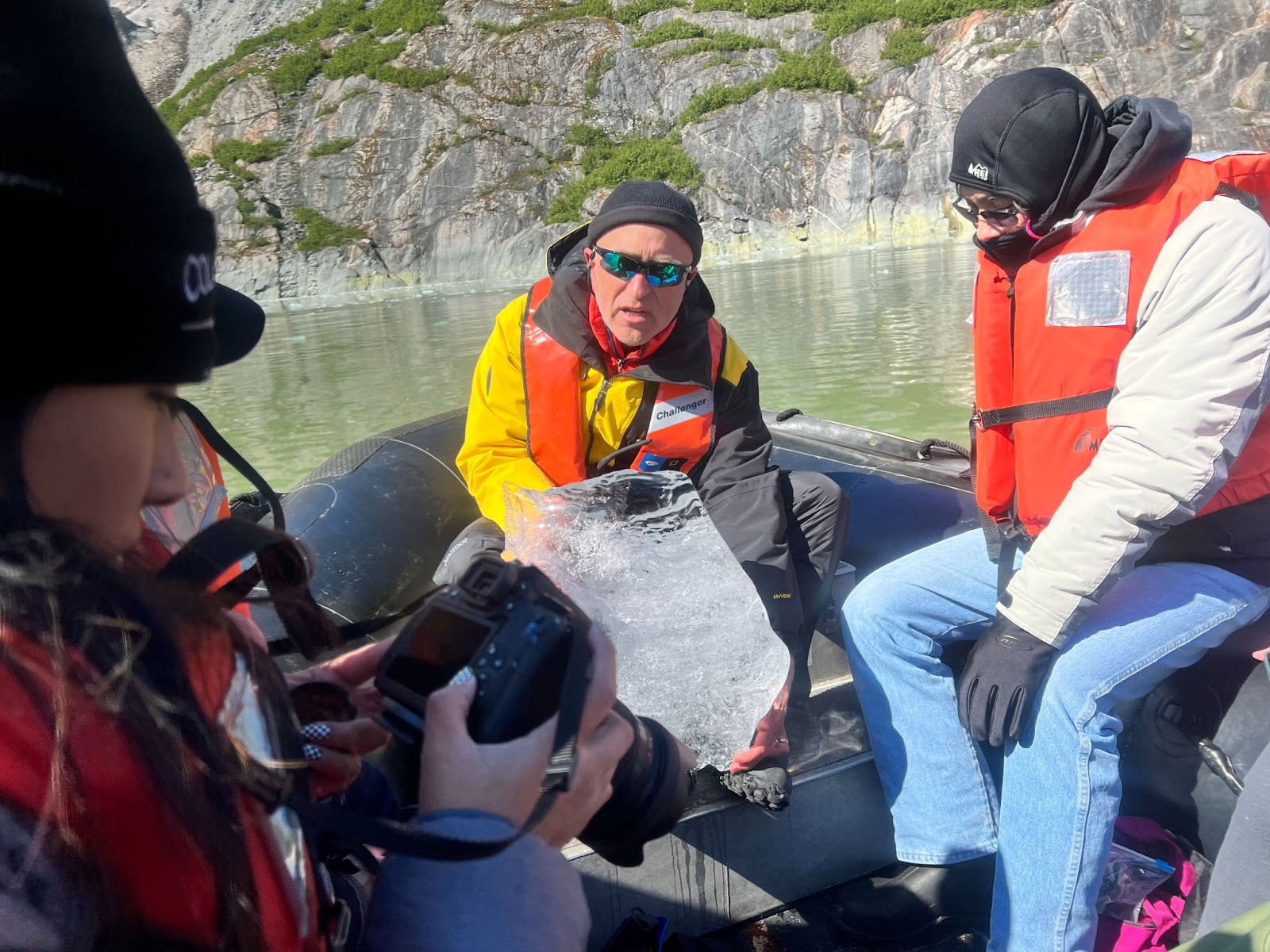
If rock built Alaska, ice carved it. More specifically, ice was the vessel through which rock carved rock. The last ice age, which was 115,000 years ago, brought massive deposits of snow, creating vast snowfields across Alaska with ice a mile thick. As these massive glaciers advanced and receded in cycles, they scraped huge amounts of fine rock material –– like the world’s heaviest piece of sandpaper –– across the great mountains of Southeast Alaska over and over and over.
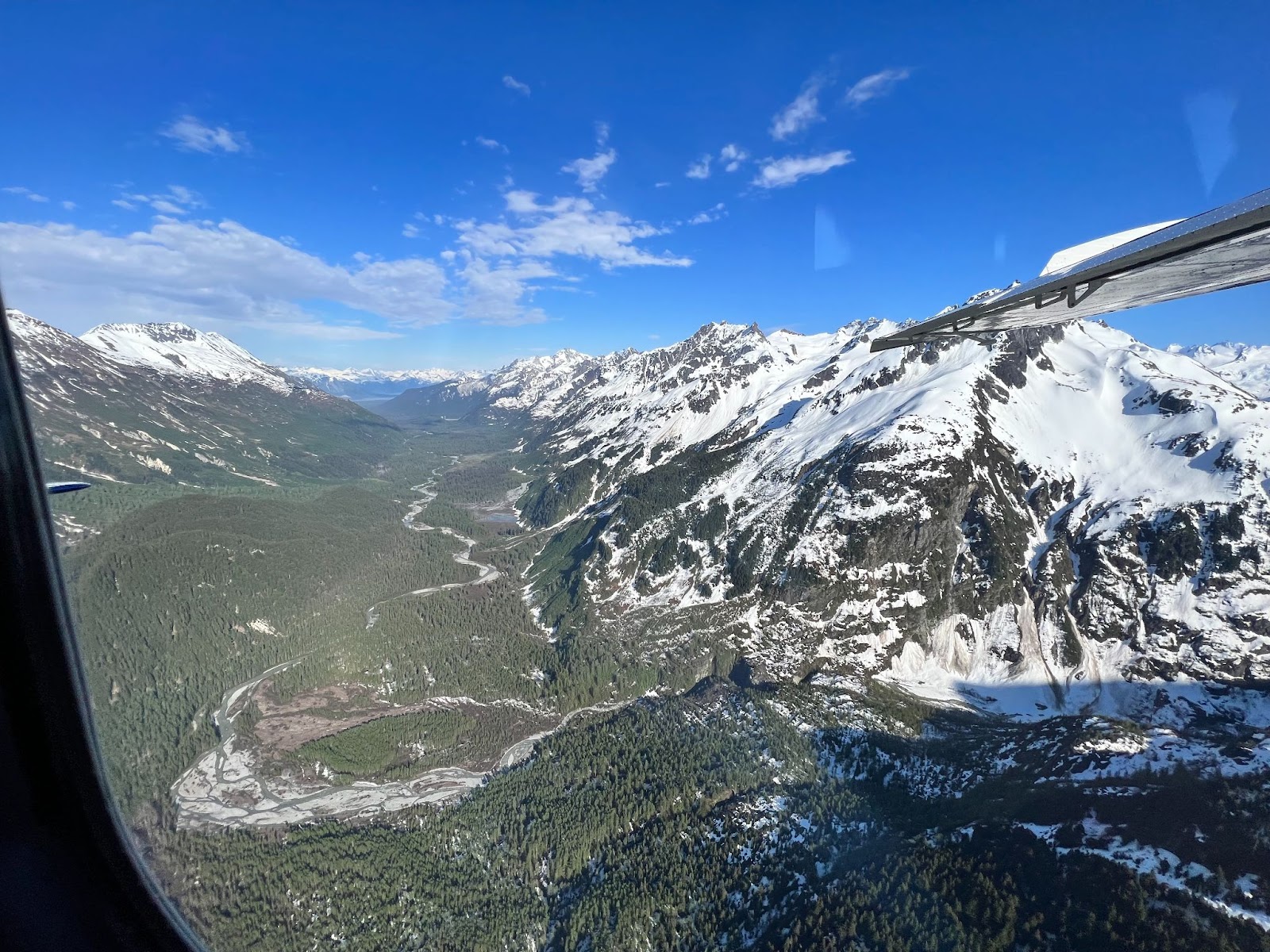
Because of the glacier’s erosive power, the fjords and bays of Alaska have a distinctive U-shape. In contrast, rivers carve canyons in sharper V-shapes like the Grand Canyon in my home state of Arizona. The U-shaped Chilkat Valley can be seen clearly from about 3,000 feet on an airplane.
Martin and I first bonded over our shared love of rocks and outdoor rock climbing. I found kinship with the only other person on the expedition who would respond to the phrase, “It’s just a rock,” with a shocked and confused, “It’s JUST a rock?!”
As I asked Martin more questions about Tracy Arm’s unique geological features, I came to a profound and simple realization. Once you understand the clues, places like Tracy Arm become storybooks. You can read a 100-million-year-old story written by Earth herself. A rock’s type, age, magnetism, location, contents, shape, and composition are all bits of information one can use to determine the details of the place you are.
I practiced this when I was walking with Martin on the beaches of Iyoukeen Bay. He began to pick up the clues of his surroundings — the rocks began speaking to him. He noted the abundance of limestone and marble and the beach’s location in Alaska and in relation to the Pacific coast. He confidently said, “This was the bottom of the sea floor long ago.” I was amazed.
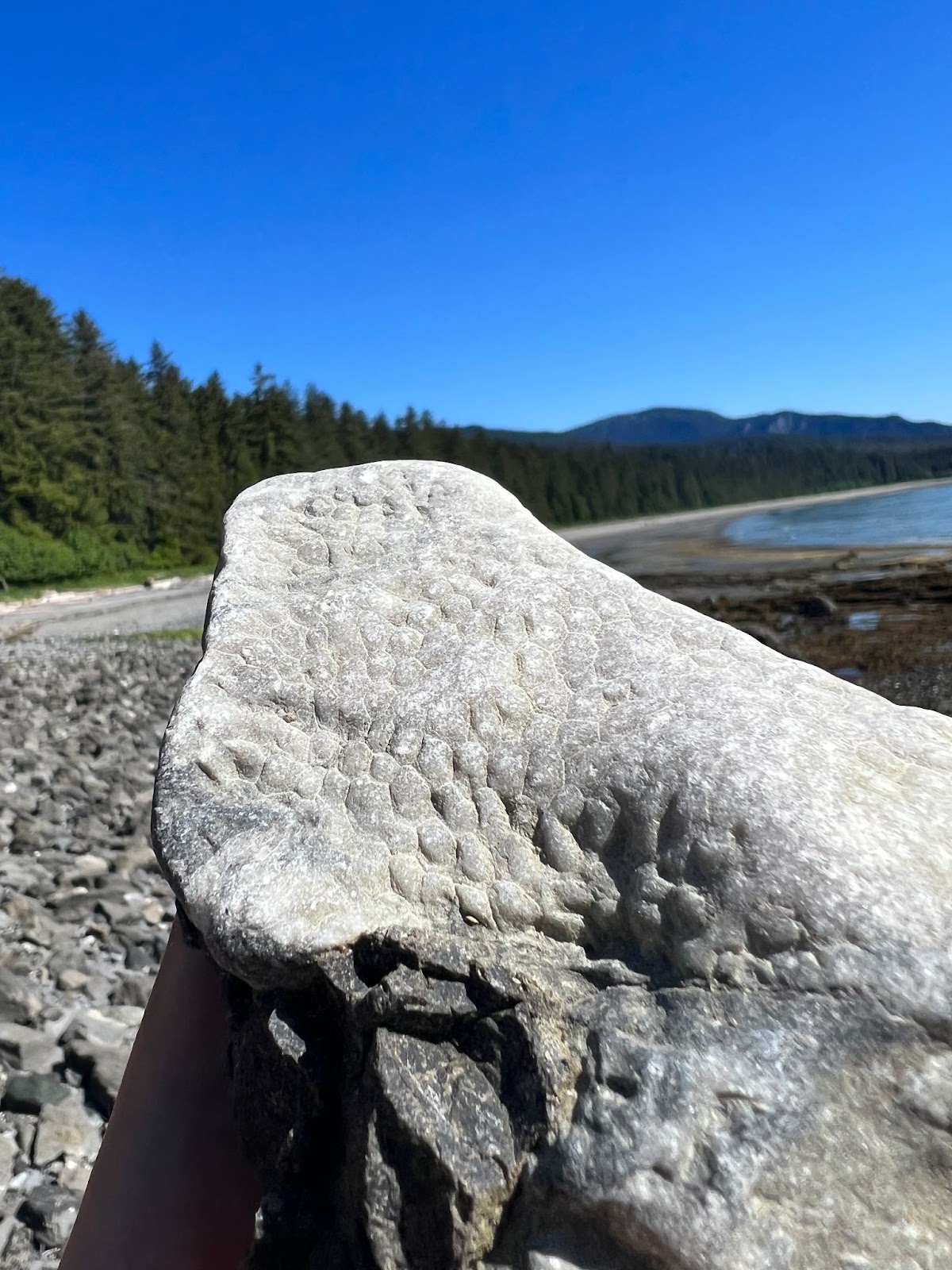
I wanted to get in on the conversation, so as any good budding geologist would, I had my eyes glued to the ground during our hike down the beach. I spotted a very peculiar and enchanting rock, and of course, I took it right over to Martin for identification. “Halley picked up fossilized coral,” he announced to the group. Realizing I had picked up a piece of ancient history, I took my time admiring its smooth surface, its patterned grooves, and its dragon-like scales. The picture of the ancient sea bed was becoming clearer.
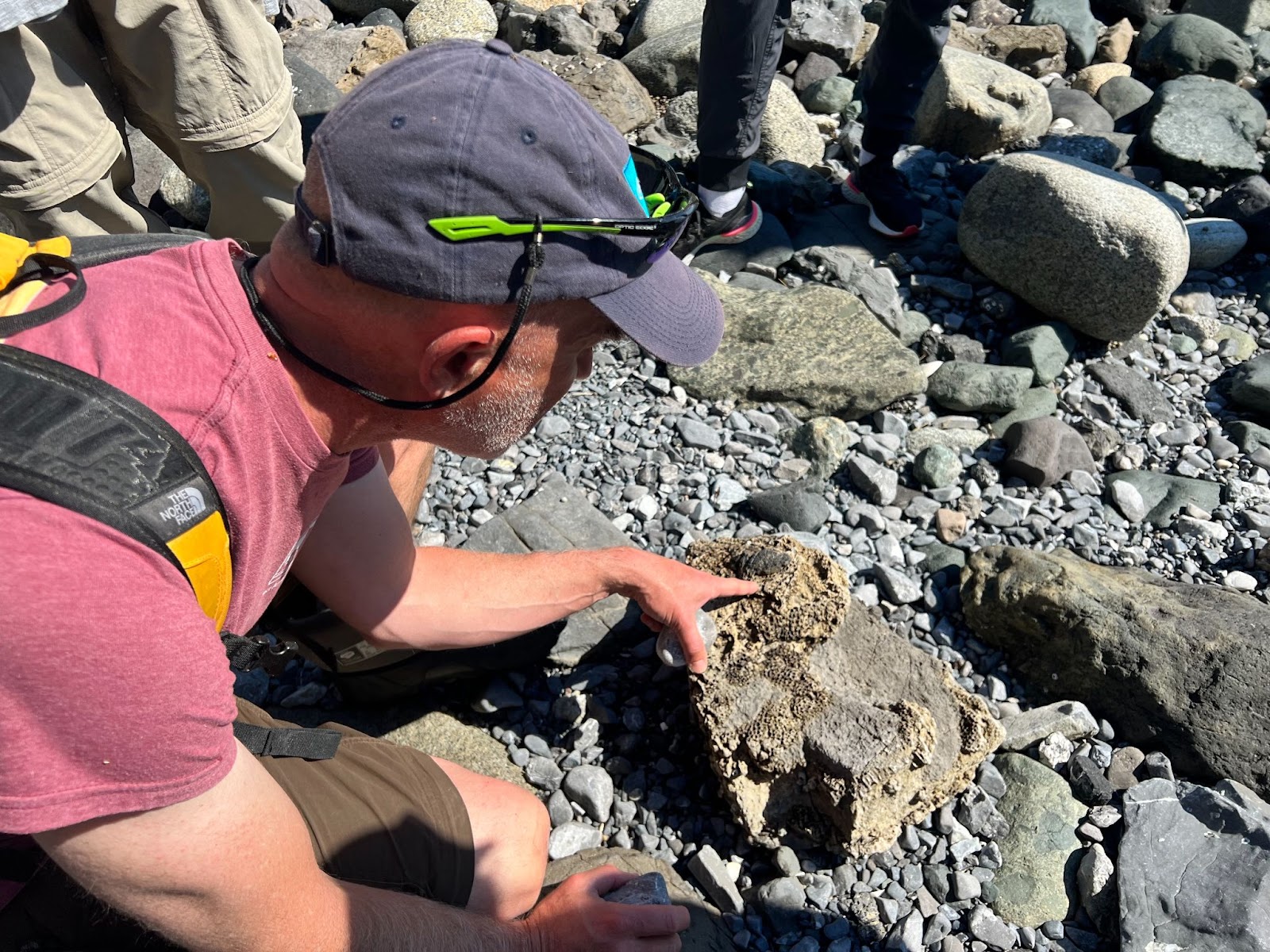
Martin then spotted more fossilized coral, and this time he was able to make an identification. He told me one of the fossils was that of a horn coral, an organism that existed only in the Devonian period, making that fossil a minimum of 350 million years old.
Martin’s knowledge and my curiosity were the keys that unlocked a deep well of ancient knowledge. By reading the clues that Earth left us on that beach, we were able to transport ourselves to a land before our time. It was a humbling experience to put myself and my life on the geological time scale of earth. It made me think about the blip that is all of human life compared to the forever of Earth. The Earth has always and will continue to leave clues for us to understand her. The Earth speaks. Rocks speak. We just have to know how to hear them. If humans spend less time talking and more time listening, we might just be able to make our profound effect on the Earth a positive one.
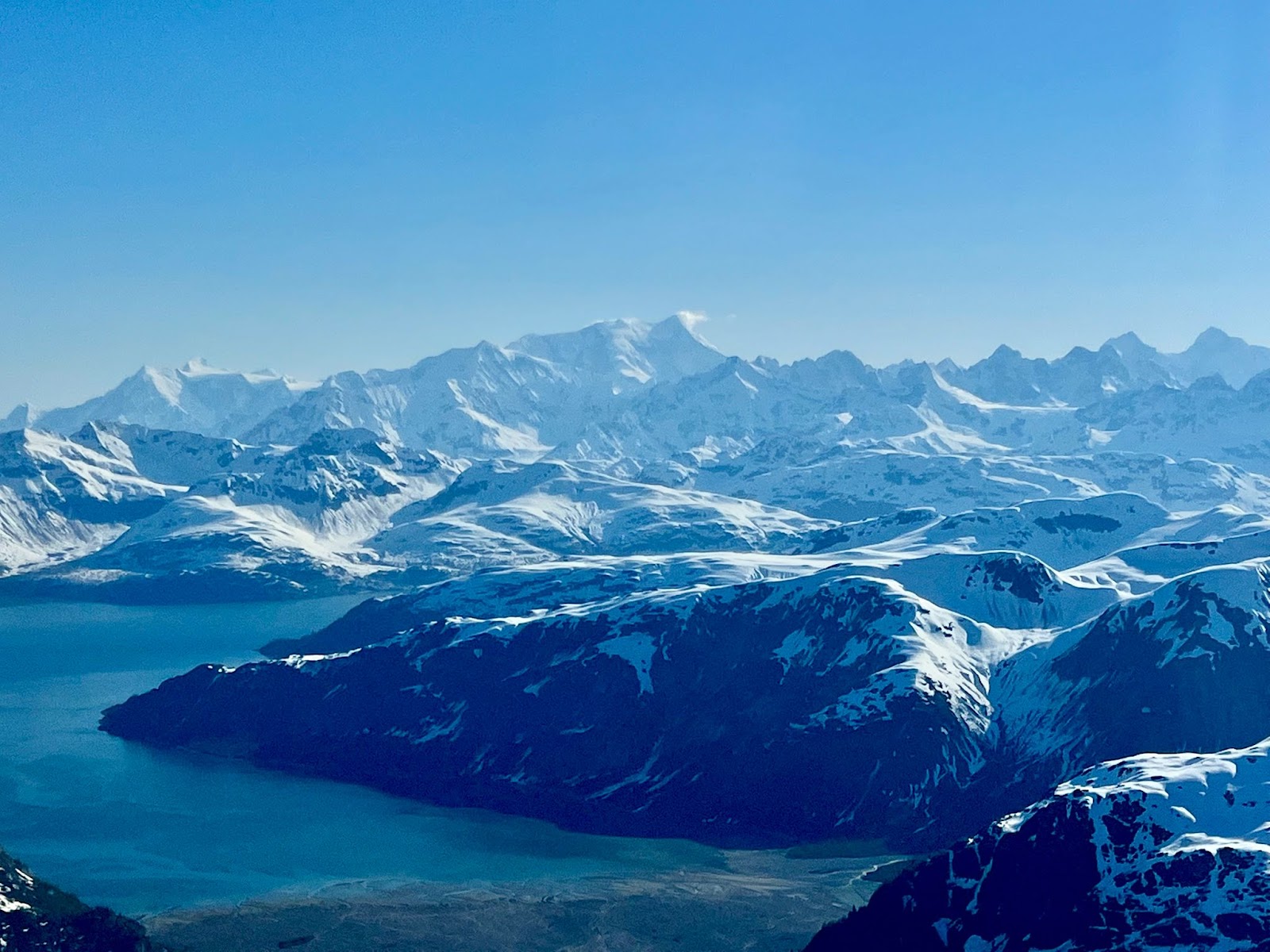
It is a magical experience to be able to read the Earth in her native language in Alaska –– it is a way to connect and engage with the natural world. That connection to the natural world is critical right now because it is what inspires us to fight for the health and safety of Earth’s wildest places. Martin said the reason he loves exploring Alaska is that “…coming to wild and unaltered places is the way we can read the story of life on this planet.” I couldn’t agree more.
––
Editor’s Note: Lindblad Expeditions, our Planet Forward Storyfest Competition partner, made this series possible by providing winners with an experiential learning opportunity aboard one of their ships. All editorial content is created independently. We thank Lindblad Expeditions for their continued support of our project. Read all the stories from the expedition in our Astonishing Alaska series.